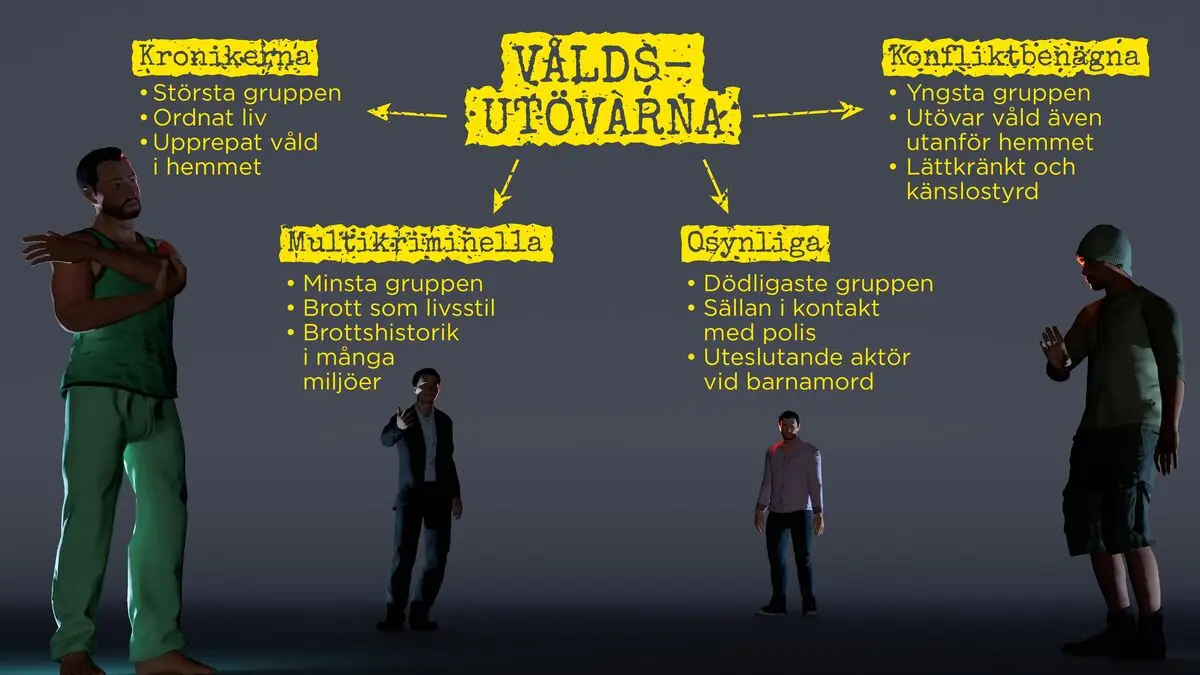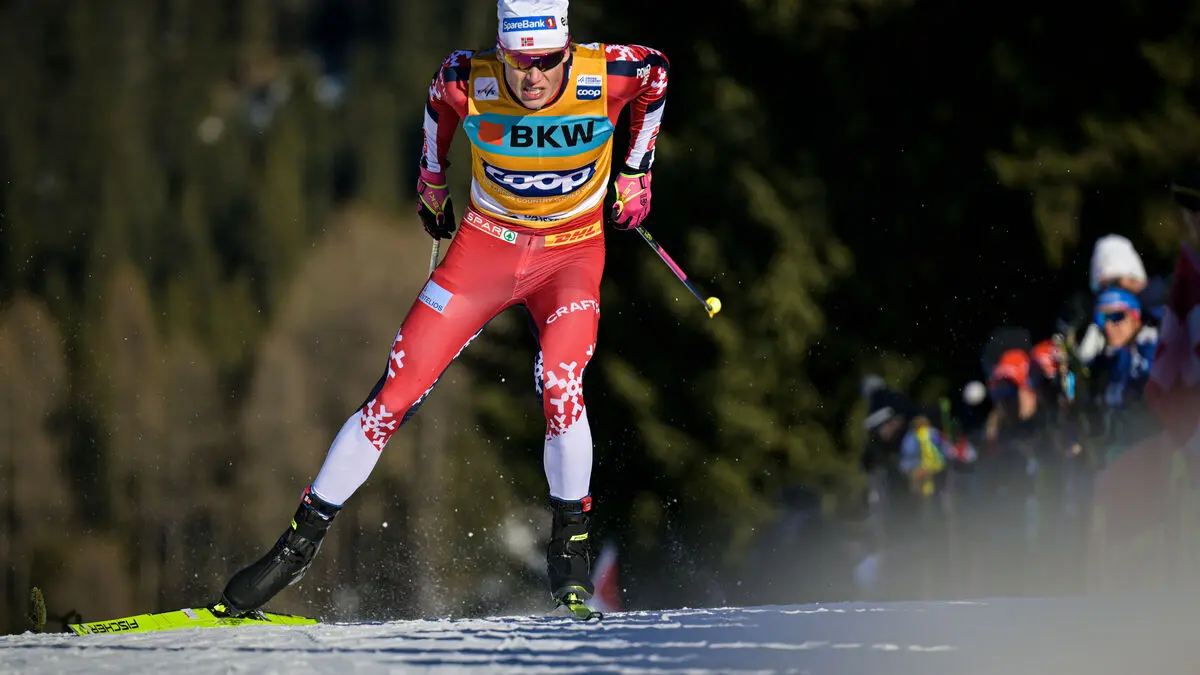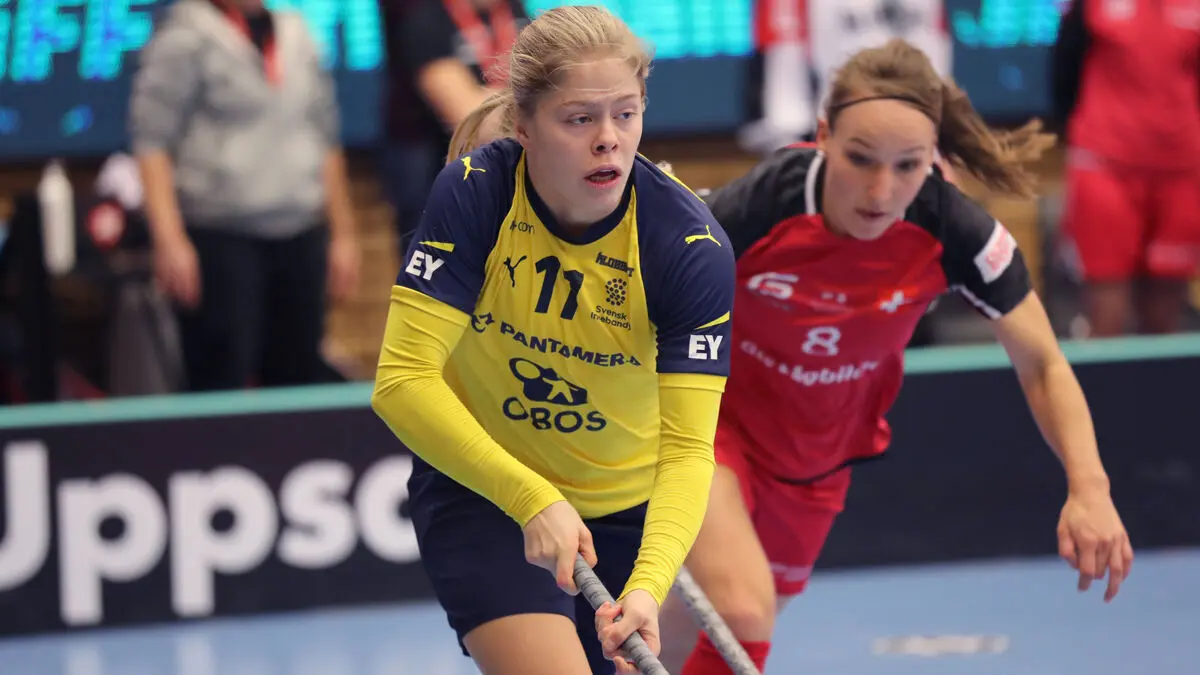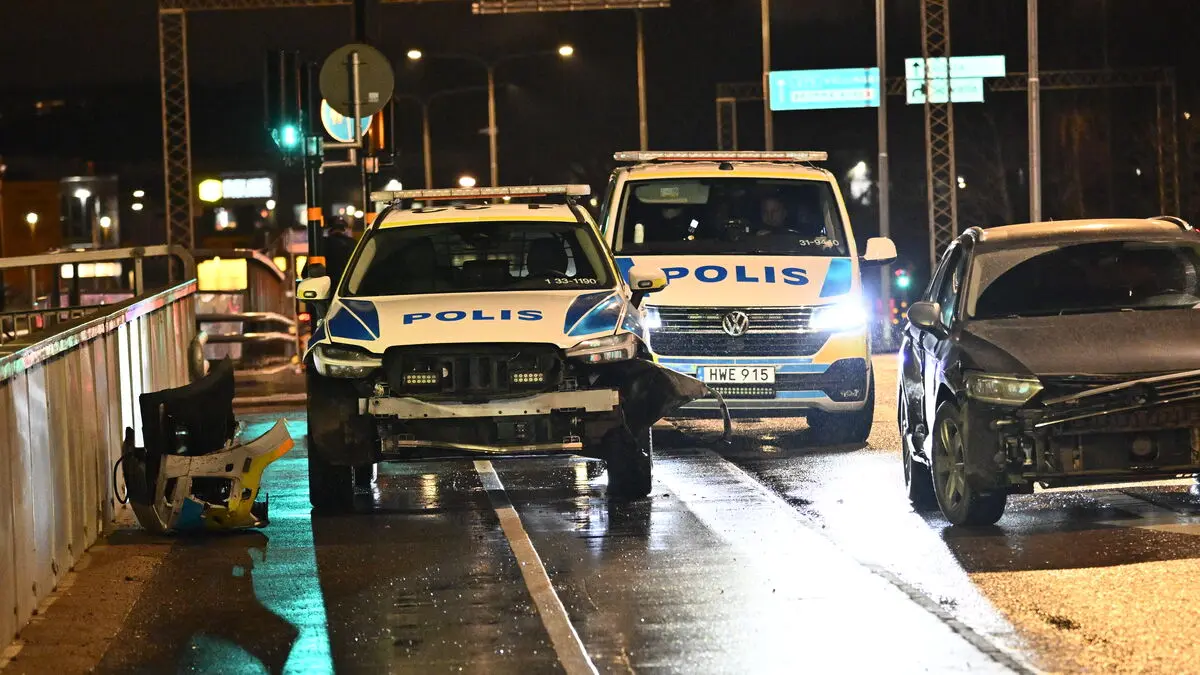People who are suspected of being capable of committing serious or fatal violence against loved ones are now actively identified by the police. They are almost always men and they are identified with factors that research has shown to be strongly associated with serious or fatal violence.
The strongest warning sign is men who have threatened suicide or attempted suicide, followed by men who have committed strangulation, according to Stefan Hector.
Those are the two strongest predictions, but it's rarely one or two, usually there are several.
Those who are considered to pose a risk are divided into four different types.
It may appear to be engineering-based and precise, of course it is not, but it is our way of achieving higher precision as different actors respond differently to different measures, says Hector.
Repeated violence
-
The “chroniclers” are the largest group and make up almost half of the people at risk. These are people who have been the victims of repeated domestic violence for a long time, who often have jobs and outwardly lead an orderly life.
-
“The invisible” is the group most commonly involved in murders, according to the police. These are people who have few reported crimes against them and who rarely come into contact with the police. The group is the oldest of the types, with an average age of 47, and has “possibly greater elements of mental illness,” according to the police.
-
“The multi-criminals” make up the smallest group. They have a varied criminal history in many environments, with many victims and suspicions against them.
-
“The conflict-prone” is the youngest group. These individuals are responsible for many violent crimes, even against people outside the home. They often have personal motives and are described as “easily offended and emotionally driven.”
Various measures
The police are working to understand and test which measures have the best effect on different actors.
Multicriminals may not respond well to a dialogue-based measure, while a chronicler with an outwardly well-ordered life responds very well to a contact ban, as it would disrupt the social circles he is in, says Stefan Hector.
The fact that the type that is least visible to the police is responsible for the most murders underlines the importance of good collaboration between social actors, he says. This is not least the case with healthcare and social services.
Factors that the police look for when identifying people who are at risk of exposing loved ones to serious or fatal violence
Suicide threats
Strangulation
Controlling behavior/jealousy
Mental illness
Ongoing separation/custody dispute
Serious and/or escalated violence
Access to weapons
Knife threat
Violation of a no-contact order
Abuse
Honor standards
Pregnancy of a partner/relative
Source: Police





